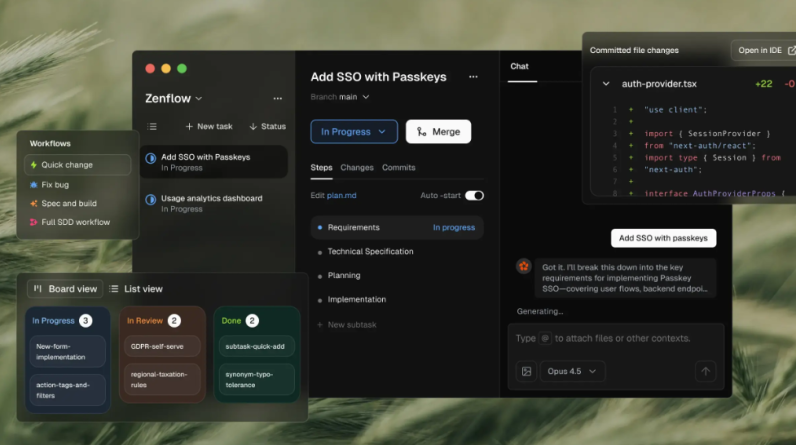
The healthcare industry is a complex web of clinical, administrative, regulatory, and financial processes. Despite the advancements in health information technology and artificial intelligence, inefficiencies remain widespread. Success in the healthcare sector hinges on leveraging health information technology to streamline both clinical and administrative workflows. To expedite workflow automation, it’s crucial to identify these inefficiencies and explore automation opportunities.
Understanding the Impact of Inefficiencies in Healthcare Workflows
Healthcare workflows impact numerous stakeholders, including patients, caregivers, clinicians, and administrative staff. Inefficiencies in these workflows can lead to significant challenges:
- Patients: Inefficient workflows can lead to longer wait times, delayed diagnoses, and suboptimal care. Patients may experience frustration and decreased satisfaction with their healthcare providers. When workflows are not optimized, the delivery of care can be delayed.
- Clinical Care Teams: Inefficiencies contribute to burnout among healthcare professionals. Clinicians spend excessive time on administrative tasks, reducing the time available for direct patient care.
- Administrative Staff: Administrative personnel often find themselves buried in paperwork and repetitive, manual tasks. This not only affects their productivity but also increases the likelihood of errors. The level of dissatisfaction, often at competitively reduced rates, adds to the complication of staff hiring and retention.
Digitized workflows that merely replicate paper-based processes contribute to these inefficiencies. These digital workflows often fail to optimize patient care through automation, resulting in an ecosystem that hampers the full potential of health information technology.
Alleviating Administrative Burden with Workflow Automation
A study on Medicaid has highlighted the potential of AI to transform administrative processes – finding that administrative costs currently account for 15% to 30% of total healthcare spending, primarily due to non-clinical expenses such as billing and insurance. However, AI and related technologies promise to reduce this administrative burden and enhance efficiency.
- Administrative Costs: Administrative expenses represent a substantial portion of healthcare spending, estimated at $1 trillion annually. This spending includes tasks that are often routine and repetitive, making them ideal candidates for automation.
- Potential Savings: Automating these tasks with current AI technologies could save between $200 billion and $360 billion over the next five years. These savings could be redirected towards improving patient care and reducing clinical burnout.
Although AI technology isn’t ready for full autonomy, generative AI (Gen AI) can be used to perform tasks like document classification and patient indexing, reducing the need for manual data entry while retaining human oversight. By automating routine tasks, healthcare providers can significantly cut waste and improve efficiency, from patient scheduling to managing medical records. Automation reduces errors and allows healthcare professionals to focus more on patient care, ultimately transforming the healthcare system.
Navigating Regulatory Challenges with Workflow Automation
Ensuring regulatory compliance in healthcare is a continuous challenge. Hospitals and clinics must keep up with ever-changing healthcare laws, regulations, and interoperability standards. Workflow automation technology enables organizations to significantly improve regulatory compliance and mitigate risks through:
- Automated Document Review and Approval: Automates document review and approval processes, ensuring timely and required approvals. This reduces the burden on staff and ensures compliance with regulatory timelines.
- Document Tracking: Tracks document changes, ensuring the use of the most current version. This helps in maintaining accurate records and reduces the risk of errors.
- Audit Trails: Generates workflow histories with audit trails, aiding in regulatory compliance demonstrations. This is crucial for regulatory audits and compliance checks.
- Notifications and Alerts: Sends notifications to stakeholders when documents are created, modified, or approved. This ensures that all relevant parties are informed and can take necessary actions promptly.
Workflow automation not only improves compliance but also saves time, reduces errors, and enhances efficiency. In the face of constant regulatory changes, workflow automation becomes a crucial tool for healthcare organizations to maintain compliance and operate efficiently.
Embracing Workflow Automation for a More Efficient Healthcare System
Embracing workflow automation is a major step toward a more efficient and effective primary care system. Automation reduces errors and allows healthcare professionals to concentrate on patient care. By automating routine tasks, healthcare providers can decrease administrative and operational waste, leading to significant cost savings and improved patient care. From appointment scheduling to patient record management, automation can streamline processes, reduce errors, and alleviate administrative burdens.
- Reduction in Administrative Workload: Automation can handle routine administrative tasks such as data entry, managing medical records, referral coordination, appointment scheduling, prior-authorizations, and billing. This reduces the time spent on manual data entry and minimizes the risk of errors. Tasks that once took hours can be completed in minutes, allowing staff to focus more on patient care.
- Improved Patient Outcomes: By streamlining processes and reducing errors, workflow automation can lead to better patient outcomes. By reducing referral intake time, as an example, a patient can be scheduled in minutes, not days. Patients receive timely and accurate care, leading to improved satisfaction and health results.
- Cost Savings: Automation can lead to significant cost savings by reducing administrative expenses and minimizing errors. These savings can be reinvested in patient care and other essential services. Automating prior-authorizations, billing and insurance claims processes also expedites the processing of claims, resulting in faster reimbursements and improved cash flow for healthcare providers.
- Expedited Referral Processes: In the U.S., more than 100 million specialist referrals are made annually, yet only half are completed due to missing information and communication failures. These breakdowns can delay diagnoses and treatments, resulting in lost revenue. Workflow automation technology powered by GenAI can address these issues by automating tasks such as document classification and routing, ensuring timely and accurate referral processing.
Adopting workflow automation is not merely a step towards efficiency; it’s a leap towards a more effective healthcare system. Harnessing the power of technology can transform healthcare for the betterment of staff, patients, and their families.
The Future of Workflow Automation in Healthcare
The future of healthcare lies in the successful integration of workflow automation and advanced technologies. As the buzz-word salad of AI, such as NLP, LLMs, Gen AI, RPA, etc continue to evolve, their potential to revolutionize healthcare workflows will only increase. AI-driven insights can provide valuable analysis by sifting through large volumes of data, aiding healthcare providers in making informed decisions and enhancing patient care. Automation and AI also pave the way for personalized care, tailoring treatments and interventions to individual patient needs, which can lead to better health outcomes and increased patient satisfaction.
Moreover, automation can bolster remote monitoring and telehealth services, enabling healthcare providers to monitor patients and deliver care remotely. Predictive analytics, another promising development, can help healthcare providers anticipate patient needs and address potential issues proactively. This leads to more efficient use of resources and improved patient outcomes. These trends and developments indicate a future where workflow automation significantly enhances the efficiency, effectiveness, and personalization of healthcare.
In conclusion, organizations that implement workflow automation technology can benefit from a more sustainable, effective, and patient-centric healthcare system. By addressing inefficiencies, reducing administrative burdens, and enhancing regulatory compliance, workflow automation revolutionizes the way in which healthcare is delivered. Healthcare organizations that harness the power of this technology will be better positioned to meet the evolving needs of patients and provide high-quality care in an increasingly complex and dynamic environment.
Related Articles
-
In addition to addressing cybersecurity risk management during the design and development of medical devices,…
-

A recent survey by the AMA showed that practicing physicians are equally excited and concerned…
-

Behavioral health providers were excluded from the 2009 HITECH Act, which contributed to significant disparities…
-

A new survey from the Center for Connected Medicine at UPMC Sheds light on how healthcare systems are navigating…






